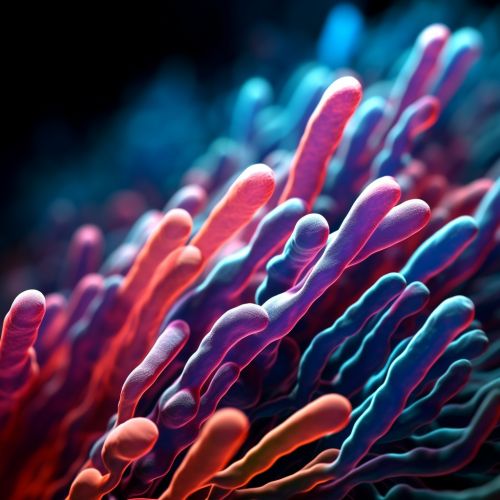Bacteria
Introduction
Bacteria are a type of biological cell. They constitute a large domain of prokaryotic microorganisms. Typically a few micrometres in length, bacteria have a number of shapes, ranging from spheres to rods and spirals. Bacteria were among the first life forms to appear on Earth, and are present in most of its habitats. Bacteria inhabit soil, water, acidic hot springs, radioactive waste, and the deep portions of Earth's crust. Bacteria also live in symbiotic and parasitic relationships with plants and animals.
Characteristics
Bacteria display a wide diversity of shapes and sizes, called morphologies. Bacterial cells are about one-tenth the size of eukaryotic cells and are typically 0.5–5.0 micrometres in length. However, a few species are visible to the unaided eye—for example, Thiomargarita namibiensis is up to half a millimetre long and Epulopiscium fishelsoni and Achromatium oxaliferum can be over a millimetre.


Classification and identification
Bacteria are classified and identified to distinguish one organism from another and to group similar organisms by criteria of interest to microbiologists or other scientists. The often stark differences between bacterial and eukaryotic cells, such as bacteria's lack of a nucleus and other membrane-bound organelles, were recognized long ago as significant distinctions to the use of a single "kingdom" to define all bacteria.
Interaction with other organisms
Despite their apparent simplicity, bacteria can form complex associations with other organisms. These symbiotic associations can be divided into parasitism, mutualism and commensalism.
Significance and roles
Bacteria play a vital role in the global ecosystem. The ecosystem, both on land and in the water, depends heavily upon the activity of bacteria. The cycling of nutrients such as carbon, nitrogen, and sulfur is completed by their ceaseless labor.
Bacteria in technology
Bacteria, often lactic acid bacteria such as bacteria from the Lactobacillus genus and Bifidobacterium, underpin the production of fermented foods such as cheese, yogurt, sauerkraut, pickles, beer, wine, cider, kimchi and others. They are used in water treatment facilities to break down organic matter and to treat sewage.
